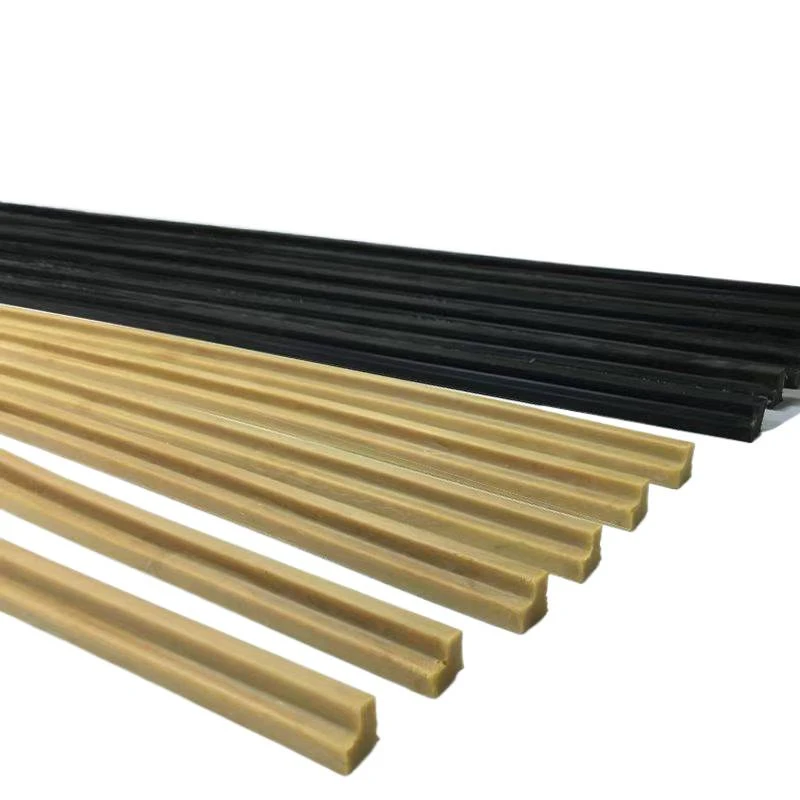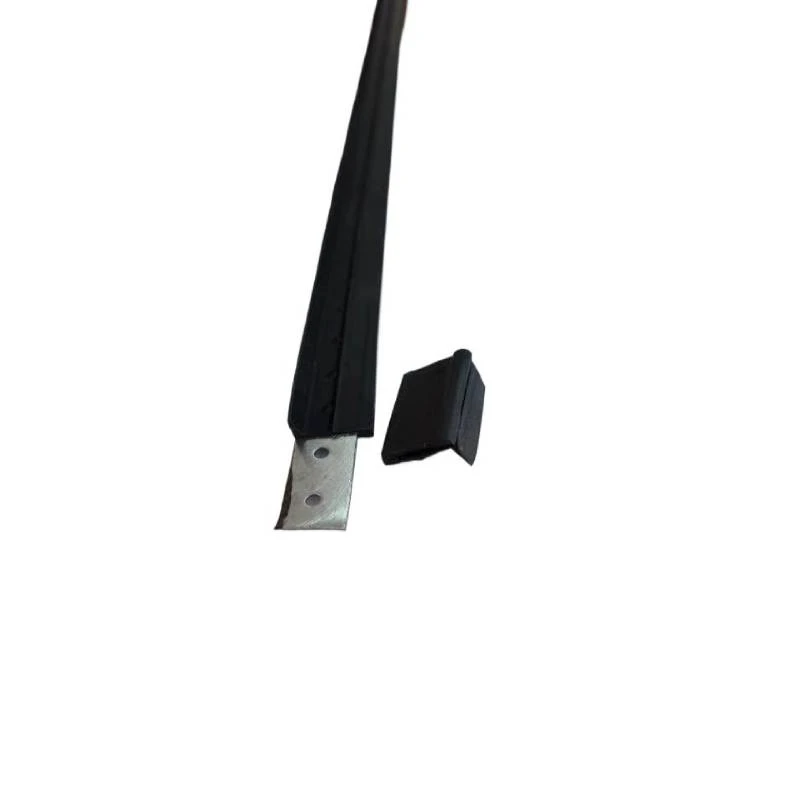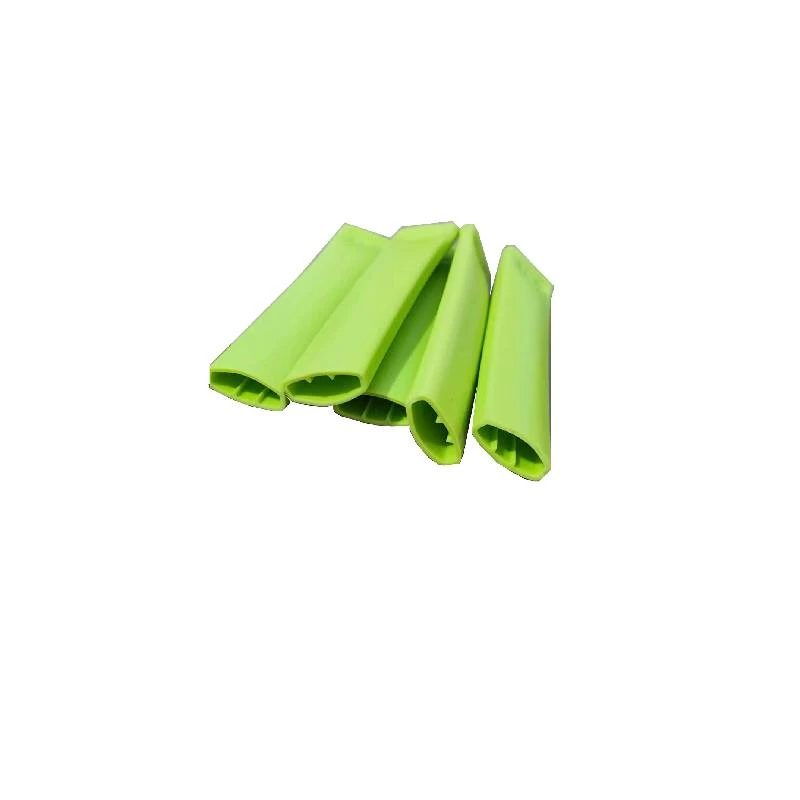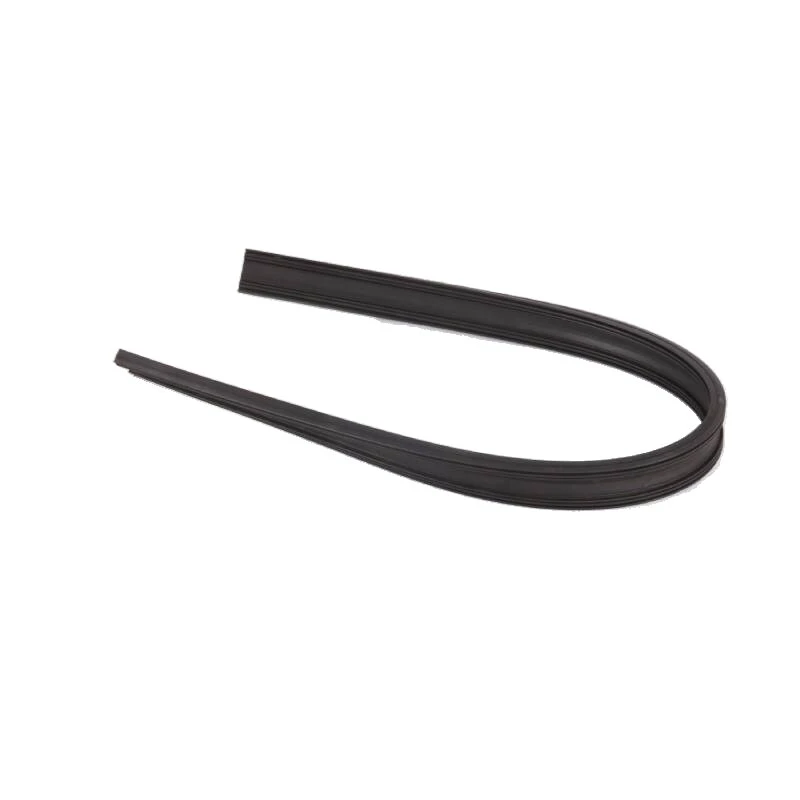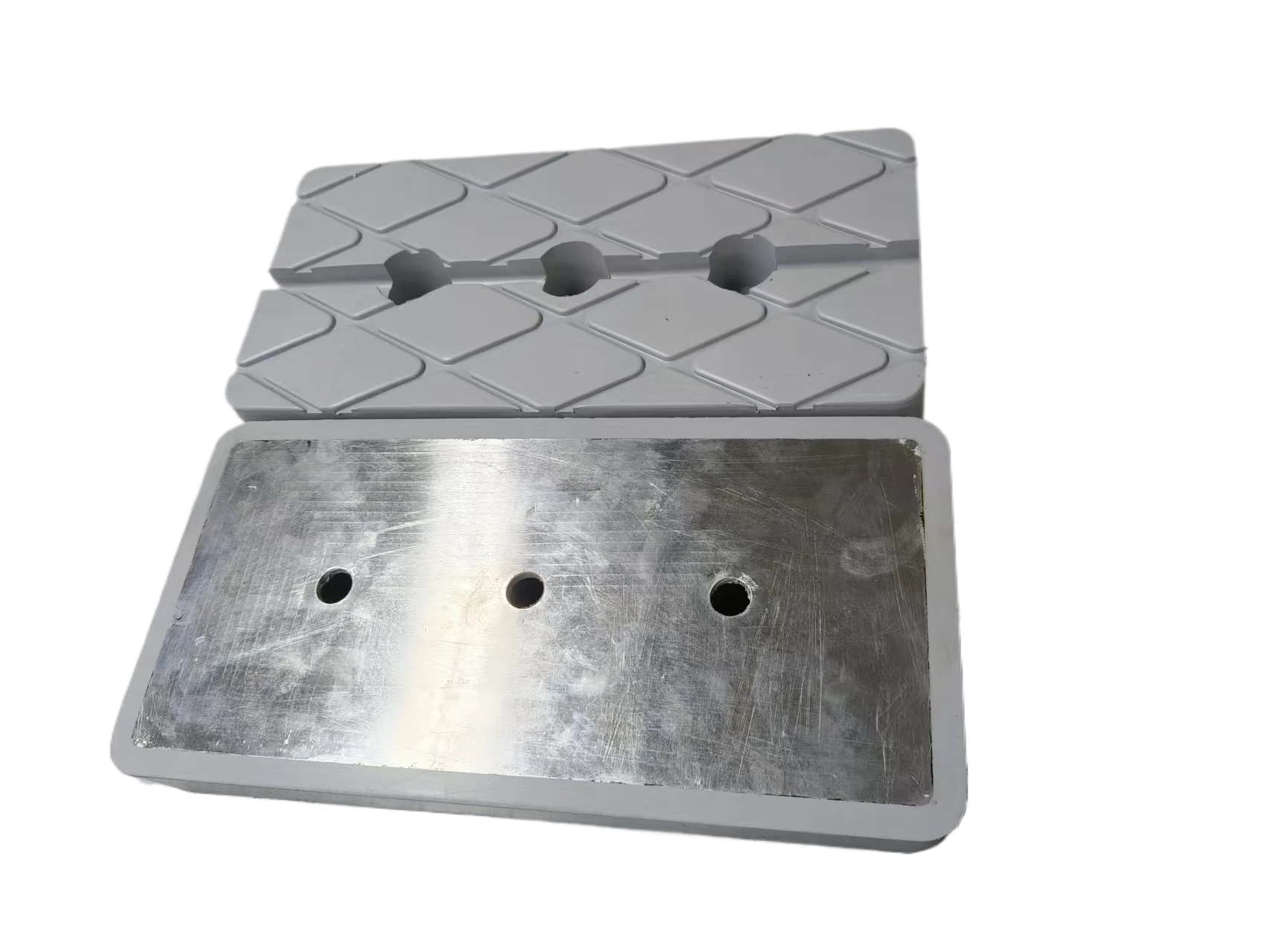Durable 2 Rubber Wheels: Smooth, Quiet & Non-Marking
Optimizing Industrial Mobility: The Engineering Behind 2 rubber wheels
In industrial and commercial environments, the efficiency and safety of material handling systems critically depend on the quality of their components. Among these, the choice of wheels plays a pivotal role. Specifically, the engineering and application of 2 rubber wheels stand out as a foundation for reliable and high-performance mobility solutions. This comprehensive guide delves into the technical intricacies, market dynamics, and operational advantages of these essential components, aimed at B2B decision-makers and engineers seeking to optimize their operational frameworks.
Industry Trends and Market Dynamics
The global market for industrial wheels is experiencing sustained growth, driven by increasing automation in manufacturing, the expansion of e-commerce logistics, and a heightened focus on workplace ergonomics and safety. Trends indicate a significant shift towards more durable, low-maintenance, and application-specific wheel solutions. Demand is particularly robust for specialized rubber caster wheels and solid rubber wheels that can withstand harsh operating conditions, offer superior load-bearing capabilities, and minimize floor damage and noise pollution. Industries such as petrochemical, metallurgy, logistics, and automotive manufacturing are continually seeking advanced wheel technologies to enhance operational uptime and reduce total cost of ownership (TCO).
- Automation Integration: The proliferation of Automated Guided Vehicles (AGVs) and Autonomous Mobile Robots (AMRs) necessitates wheels with precise tracking, minimal rolling resistance, and exceptional durability.
- Sustainability Focus: A growing emphasis on sustainable manufacturing drives demand for wheels made from recyclable materials or those that contribute to energy efficiency through reduced friction.
- Ergonomics and Noise Reduction: Regulatory push and worker well-being initiatives require wheels that dampen vibration and operate quietly, particularly in indoor environments.
- Specialized Environments: Industries operating in extreme temperatures, corrosive chemical environments, or requiring anti-static properties demand highly specialized rubber compounds and wheel designs.
The Manufacturing Process of Polyurethane Rubber Wheels
The production of high-performance 2 rubber wheels, particularly those utilizing polyurethane, is a sophisticated process demanding precision engineering and rigorous quality control. Our Polyurethane Rubber Wheels are engineered for peak performance across diverse industrial applications. Here, we outline the key stages:
Process Flow Diagram: Polyurethane Rubber Wheel Manufacturing
-
1. Material Selection & Preparation
Materials: High-grade polyurethane elastomers (e.g., polyether or polyester based for specific properties like hydrolysis resistance or abrasion resistance), steel or cast iron cores (for heavy-duty applications), or polyamide/nylon cores (for lighter loads, corrosion resistance). Additives for UV stability, anti-static properties, or enhanced chemical resistance are precisely measured.
Process: Raw polymer resins are prepared, and core materials are thoroughly cleaned and coated with specialized bonding agents to ensure optimal adhesion between the tread and core.
-
2. Core Manufacturing & Machining
Process: For metal cores, forging or casting techniques are employed to achieve the desired mechanical properties and dimensional stability. Subsequently, advanced CNC machining is utilized to precisely shape the core, create bearing seats, and ensure tight tolerances for concentricity and run-out. This is critical for smooth operation and extended bearing life, directly impacting the service life of the finished wheel.
-
3. Polyurethane Casting/Bonding
Process: The prepared core is placed into a precision mold. Liquid polyurethane components are mixed under vacuum (to eliminate air bubbles) and then cast or injected into the mold around the core. This process, often referred to as 'liquid casting,' ensures a homogeneous, void-free tread that is chemically bonded to the core. The curing parameters (temperature, time) are strictly controlled to achieve optimal material properties like hardness (Shore D), resilience, and abrasion resistance.
-
4. Curing & Post-Processing
Process: After initial solidification, the wheels undergo a post-curing cycle in ovens to fully develop the polyurethane's mechanical properties, enhancing its long-term durability and performance. This step is crucial for achieving superior chemical resistance and resistance to dynamic fatigue.
-
5. Finishing & Quality Control
Process: The finished wheels are trimmed, deburred, and undergo a comprehensive quality inspection. Testing standards include ISO 9001 for quality management systems, ANSI standards for specific product parameters, and internal specifications for load capacity, dynamic fatigue, abrasion resistance (e.g., using DIN 53516 or ASTM D1630), hardness (Shore A/D), and dimensional accuracy. Each wheel is meticulously checked to ensure it meets our stringent performance criteria, guaranteeing a long service life and exceptional performance in demanding target industries such as petrochemical and metallurgy, where energy saving and corrosion resistance are paramount.

Technical Specifications and Performance Parameters
Understanding the precise technical specifications of 2 rubber wheels is crucial for optimal selection and integration into industrial systems. Our Polyurethane Rubber Wheels are engineered to meet demanding performance criteria, providing reliable operation even in the harshest environments. The following table provides a detailed overview of typical parameters:
Polyurethane Rubber Wheel - Key Specifications
| Parameter | Typical Range/Value | Technical Rationale & Advantage |
|---|---|---|
| Wheel Diameter | 75mm to 300mm+ | Larger diameters reduce rolling resistance and are ideal for navigating obstacles, while smaller diameters suit confined spaces. |
| Tread Width | 30mm to 100mm+ | Wider treads distribute weight over a larger area, reducing point loading and protecting sensitive floor surfaces, while narrower treads offer greater maneuverability. |
| Load Capacity | 100 kg to 1500 kg per wheel (static) | Engineered for heavy-duty applications. Polyurethane’s high resilience allows for significant weight support without permanent deformation, ensuring long-term reliability. |
| Hardness (Shore D) | 75A to 98A (or 50D to 70D for very hard) | Tread hardness impacts load capacity, rolling resistance, and floor protection. Higher Shore D provides greater load capacity and durability; lower Shore A enhances cushioning and floor protection. |
| Temperature Range | -30°C to +80°C (continuous) | Special formulations can extend this range. Ensures stable performance in diverse climates and process conditions, from cold storage to elevated temperatures in foundries. |
| Abrasion Resistance | Excellent (DIN 53516 wear | Polyurethane significantly outperforms traditional rubber in abrasive environments, leading to extended wheel life and reduced replacement costs. |
| Chemical Resistance | Good to Excellent against oils, greases, solvents, many acids/bases | Crucial for petrochemical, chemical processing, and food & beverage industries. Prevents degradation from common industrial chemicals. |
| Rolling Resistance | Low (significantly lower than standard rubber) | Contributes to energy saving in powered systems and reduces manual effort, enhancing ergonomics and operational efficiency. |
| Noise Level | Very Low | Polyurethane's inherent vibration dampening properties reduce operational noise, creating a quieter and safer work environment. |
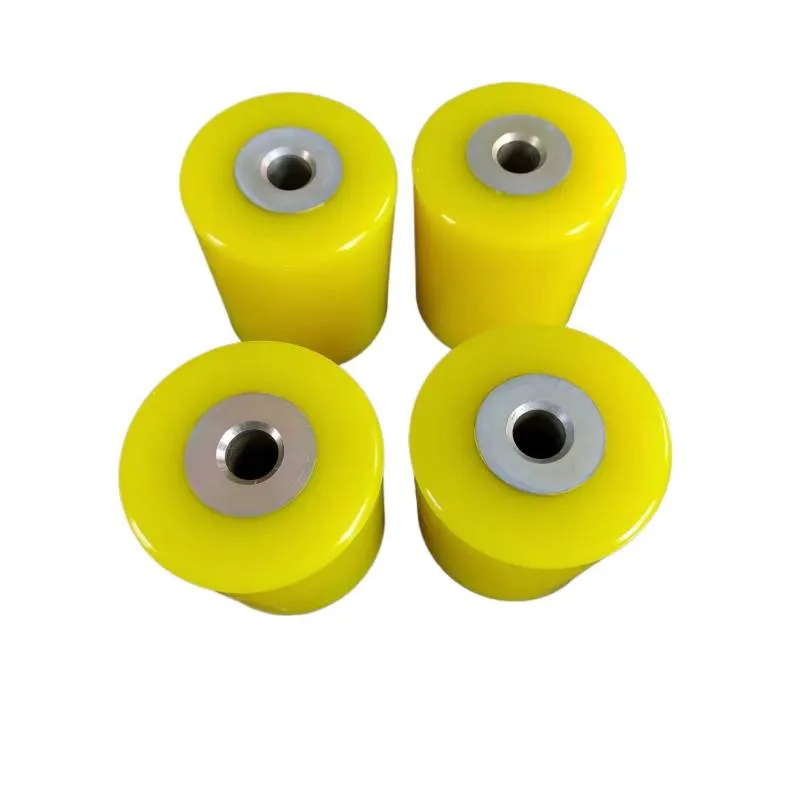
Technical Advantages of Advanced Rubber Wheels
The selection of high-quality solid rubber wheels or polyurethane rubber wheels brings forth a multitude of technical and operational advantages essential for modern industrial applications:
- Superior Abrasion Resistance: Polyurethane compounds offer significantly higher resistance to wear and tear compared to traditional rubber, especially in environments with abrasive particles. This extends the service life of the wheels, reducing maintenance frequency and replacement costs.
- Exceptional Load-Bearing Capacity: Engineered for durability, these wheels can support substantially heavier loads without deforming or failing. This is achieved through optimized material hardness and robust core designs, critical for heavy-duty material handling.
- Reduced Rolling Resistance (Energy Saving): The elastic properties and optimized tread designs of polyurethane wheels minimize friction with floor surfaces. This leads to reduced energy consumption for powered equipment (like AGVs) and less physical effort for manual trolleys, directly translating to energy saving and improved operational efficiency.
- Chemical and Corrosion Resistance: Polyurethane formulations are inherently resistant to a wide range of industrial chemicals, oils, greases, and solvents. This makes them ideal for use in harsh chemical processing, petrochemical, and food & beverage facilities where exposure to corrosive substances is common, ensuring longevity and safety.
- Floor Protection and Noise Reduction: The resilience of rubber and polyurethane treads provides excellent floor protection, preventing scuffing, gouging, and marking, particularly on delicate or finished surfaces. Furthermore, their shock-absorbing capabilities significantly reduce operational noise and vibration, contributing to a quieter and more ergonomic work environment.
- Wider Operating Temperature Range: High-grade polyurethane maintains its mechanical properties across a broad temperature spectrum, from extreme cold to moderate heat, ensuring consistent performance in diverse industrial settings.
- Enhanced Safety and Stability: The superior grip and dampening characteristics of these wheels contribute to greater stability for transported goods, minimizing the risk of spills or damage during transit. Anti-static options further mitigate risks in explosive environments.
Application Scenarios and Case Studies
The versatility and robust performance of rubber caster wheels make them indispensable across a multitude of industries. Their specific advantages address critical operational challenges, enhancing efficiency, safety, and longevity of equipment.
Diverse Industrial Applications
- Petrochemical Industry: Used in trolleys for moving chemical container111s, drum dollies, and mobile platforms, where resistance to aggressive chemicals and oils is critical for maintaining integrity and preventing spills.
- Metallurgy and Heavy Manufacturing: Employed in heavy-duty material handling carts for billets, dies, and components. Their high load capacity and heat resistance (for specific formulations) are paramount.
- Water Supply & Drainage: Equipment for maintenance and inspection of infrastructure often requires wheels that are non-corrosive and can operate reliably in damp or submerged conditions.
- Logistics and Warehousing: Essential for pallet jacks, order picking trolleys, and AGVs, requiring low rolling resistance for energy efficiency and non-marking properties to protect warehouse floors.
- Automotive Assembly: Used on assembly line trolleys, parts carts, and specialized jigs, requiring precision, quiet operation, and floor protection.
- Food Processing and Pharmaceuticals: Non-marking, easy-to-clean, and FDA-compliant materials are critical for hygienic environments, ensuring contamination prevention.
Real-World Case Studies
Case Study 1: Petrochemical Plant Maintenance Trolleys
Challenge: A major petrochemical facility in Texas faced frequent replacement of its conventional rubber wheels on maintenance trolleys due to rapid degradation from exposure to sulfuric acid and various hydrocarbons. This resulted in significant downtime and high maintenance costs.
Solution: We provided custom-engineered Polyurethane Rubber Wheels with a specific polyether-based compound known for its exceptional chemical resistance. The wheels featured a robust cast iron core, CNC machined for precise fitment.
Outcome: After 18 months, the client reported zero wheel failures, a 75% reduction in wheel replacement frequency, and improved safety due to consistent trolley mobility. The superior corrosion resistance and longevity of these 2 rubber wheels led to an estimated annual saving of over $50,000 in direct and indirect costs.
Case Study 2: Automotive Assembly Line AGVs
Challenge: An automotive manufacturer in Michigan experienced high energy consumption and excessive noise from AGVs on its busy assembly line, equipped with standard rubber wheels. The wheels also left scuff marks on the epoxy-coated factory floor.
Solution: We supplied advanced Polyurethane Rubber Wheels with a specific tread profile optimized for low rolling resistance and a Shore 90A hardness. These were designed with precision bearings to reduce friction.
Outcome: The new wheels reduced AGV power consumption by an average of 15%, equating to substantial energy saving. Noise levels were significantly reduced (approximately 8 dB), improving workplace acoustics, and the problem of floor marking was entirely eliminated. The client praised the improved operational efficiency and worker environment.

Vendor Comparison: Why Our Polyurethane Rubber Wheels Stand Out
Choosing the right supplier for industrial wheels is a strategic decision that impacts long-term operational costs and efficiency. We are committed to delivering superior performance and value. Below is a comparative analysis of our Polyurethane Rubber Wheels against common alternatives in the market.
Wheel Material Comparison Table
| Feature | Our Polyurethane Rubber Wheels | Standard Rubber Wheels | Basic Nylon Wheels |
|---|---|---|---|
| Material Composition | Premium Polyurethane (Polyether/Polyester options) on Steel/Cast Iron/Polyamide cores | Natural or Synthetic Rubber on Cast Iron/Steel cores | Nylon (Polyamide) Plastic |
| Load Capacity | Excellent (Up to 1500 kg/wheel) | Good (Up to 800 kg/wheel) | Moderate (Up to 500 kg/wheel) |
| Abrasion Resistance | Superior (Long service life) | Good (Moderate service life) | Fair (Prone to chipping/wear) |
| Chemical Resistance | Excellent (Oils, greases, many acids/bases) | Fair (Degrades with oils/many chemicals) | Good (Limited resistance to some strong acids) |
| Floor Protection | Excellent (Non-marking, dampening) | Good (Can mark some floors, less dampening) | Poor (Hard, can scratch/gouge) |
| Noise Level | Very Low | Low to Moderate | High (Very noisy) |
| Rolling Resistance | Very Low (Energy-efficient) | Moderate | Low (But less grip) |
| Cost (Lifecycle) | High initial, very low long-term (due to durability, efficiency) | Moderate initial, moderate long-term (frequent replacement) | Low initial, high long-term (damage to floors, frequent replacement) |
This comparison highlights that while initial costs for advanced 2 rubber wheels might be higher, the total cost of ownership is significantly lower due to their extended service life, reduced maintenance, improved operational efficiency, and prevention of floor damage. Our commitment to ISO-certified manufacturing processes and use of premium raw materials ensures that our products consistently outperform standard offerings.
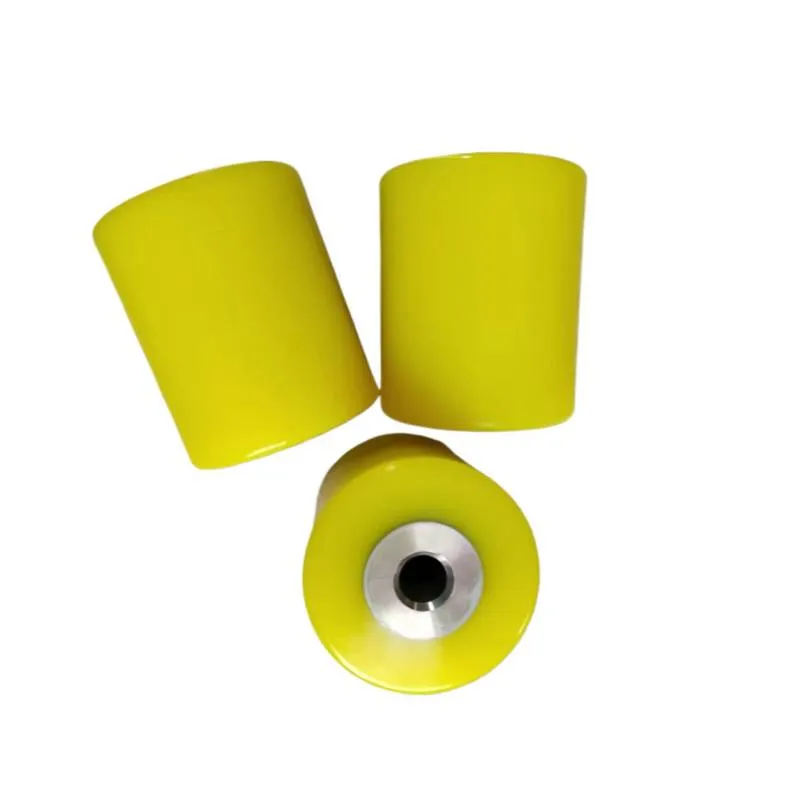
Customized Solutions for Unique Challenges
Recognizing that standard products may not always meet the precise demands of highly specialized industrial applications, we offer extensive customization capabilities for 2 rubber wheels. Our engineering team collaborates closely with clients to develop bespoke wheel solutions that integrate seamlessly with existing systems and address unique operational constraints.
Areas of Customization:
- Material Composition: Tailoring polyurethane formulations for specific chemical resistance (e.g., enhanced resistance to particular acids, alkalis, or solvents), temperature extremes, or anti-static properties (ESD-safe wheels for electronics manufacturing or hazardous environments).
- Tread Design & Hardness: Custom tread patterns for specialized grip requirements (e.g., wet surfaces, inclines) and precise Shore hardness adjustments to optimize between load capacity, floor protection, and rolling resistance.
- Core Material & Design: Selection of core materials (steel, cast iron, aluminum, polyamide) and custom hub designs, including specific bore sizes, keyways, or bolt hole patterns to integrate with unique axles or caster frames.
- Bearing Integration: Choice of precision bearings (e.g., ball bearings, roller bearings, plain bores) suitable for different speed ratings, load profiles, and environmental conditions (e.g., sealed bearings for dusty or wet environments).
- Dimensional Specifications: Manufacturing wheels with precise diameters, widths, and offsets to fit specialized equipment or to achieve specific ground clearances and maneuvering characteristics.
- Color Coding: Custom color options for easy identification in complex logistics systems or for safety zoning.
Our process for customized solutions involves detailed consultation, CAD design, rapid prototyping, and rigorous testing, ensuring the final product meets all performance requirements and quality standards (e.g., ISO 9001). This bespoke approach guarantees optimal performance and long-term cost-effectiveness, transforming unique challenges into robust, reliable solutions.
Trustworthiness: Your Partner in Industrial Mobility
Frequently Asked Questions (FAQ)
Q1: How do I select the right hardness for my 2 rubber wheels?
A1: The ideal hardness (Shore A or D) depends on your application's load capacity, floor type, and desired rolling resistance. Harder wheels (higher Shore D) handle heavier loads and offer lower rolling resistance but provide less floor protection and cushioning. Softer wheels (lower Shore A) offer superior floor protection, shock absorption, and quiet operation, but with reduced load capacity. Our technical team can assist in making the optimal selection based on your specific operational parameters.
Q2: What is the typical service life of your Polyurethane Rubber Wheels?
A2: Due to superior abrasion and chemical resistance, our polyurethane wheels generally have a significantly longer service life than conventional rubber or nylon wheels, often lasting 2-5 times longer under comparable conditions. Actual service life varies based on load, speed, operating environment (temperature, chemicals), and maintenance practices. We provide projected service life estimates based on application specifics.
Q3: Are your solid rubber wheels suitable for outdoor use?
A3: Yes, our Polyurethane Rubber Wheels are highly suitable for outdoor applications. Their excellent resistance to UV radiation, moisture, and varying temperatures ensures reliable performance and durability even in demanding outdoor environments. Special formulations can be selected for extreme conditions.
Q4: Can these wheels handle exposure to harsh chemicals?
A4: Yes. Our polyurethane formulations are specifically developed to offer high resistance to a broad spectrum of industrial chemicals, including oils, greases, fuels, and many acids and bases. For highly corrosive or unique chemical exposures, we can recommend or custom-engineer a specific polyurethane compound to ensure maximum compatibility and service life.
Lead Time and Fulfillment
Our standard lead time for common configurations of 2 rubber wheels is typically 2-4 weeks, depending on order volume and specific product. For customized solutions, lead times may range from 6-10 weeks, incorporating design, prototyping, testing, and production phases. We maintain robust supply chain management and efficient manufacturing processes to ensure timely delivery and minimize disruption to your operations. Expedited options are available upon request for urgent requirements.
Warranty Commitments
We stand behind the quality and performance of our Polyurethane Rubber Wheels with a comprehensive warranty against defects in materials and workmanship. Our standard warranty period is 12 months from the date of purchase. Specific warranty details may vary based on product type and application, and all claims are processed with promptness and transparency, adhering to our commitment to customer satisfaction and product reliability.
Customer Support and After-Sales Service
Our dedication to our clients extends far beyond the point of sale. We offer comprehensive technical support, including product selection guidance, installation advice, and troubleshooting assistance. Our team of experienced engineers is available to provide expert consultation, ensuring you derive maximum value from our products. For after-sales service, we provide spare parts, maintenance recommendations, and continuous support to ensure the long-term operational excellence of your industrial equipment.

Conclusion
The strategic integration of high-performance 2 rubber wheels is more than just a component choice; it's an investment in operational efficiency, safety, and long-term cost savings. Our Polyurethane Rubber Wheels represent the pinnacle of engineering excellence, designed to meet the rigorous demands of modern industrial environments. By offering unparalleled durability, chemical resistance, load capacity, and energy-saving properties, we empower B2B enterprises to optimize their material handling systems and achieve superior productivity. Partner with us to leverage cutting-edge wheel technology tailored to your specific industrial needs.
References
- ISO 9001:2015 Quality Management Systems – Requirements. International Organization for Standardization.
- ASTM D1630 - 06(2020) Standard Test Method for Abrasion Resistance of Rubber by the Pico Abrader. ASTM International.
- Modern Plastics Encyclopedia. "Polyurethanes." McGraw-Hill, various editions.
- Transportation Research Board. "Impact of Pavement Surface Roughness on Rolling Resistance and Fuel Consumption." National Academies Press, 2011.
- Polymer Science and Engineering: The First 50 Years. "Polyurethanes." National Academies Press, 2017.
-
Plastic Pelton Wheel – Lightweight, Cost-Effective Hydropower SolutionsNewsNov.24,2025
-
Durable and Cost-Effective Plastic Sheave Wheels for Modern IndustryNewsNov.24,2025
-
Plastic Spoke Wheel – Lightweight, Durable Wheels for Global Mobility SolutionsNewsNov.24,2025
-
Plastic Stem Casters: Durable, Cost-Effective Mobility Solutions for Every IndustryNewsNov.24,2025
-
Plastic Wheel Roller: Durable, Lightweight Solutions for Modern IndustryNewsNov.24,2025
-
Plastic Wheelchair Wheels: Durable, Affordable Mobility Solutions WorldwideNewsNov.24,2025
-
Small Plastic Casters – Durable, Lightweight Wheels for Global MobilityNewsNov.24,2025




